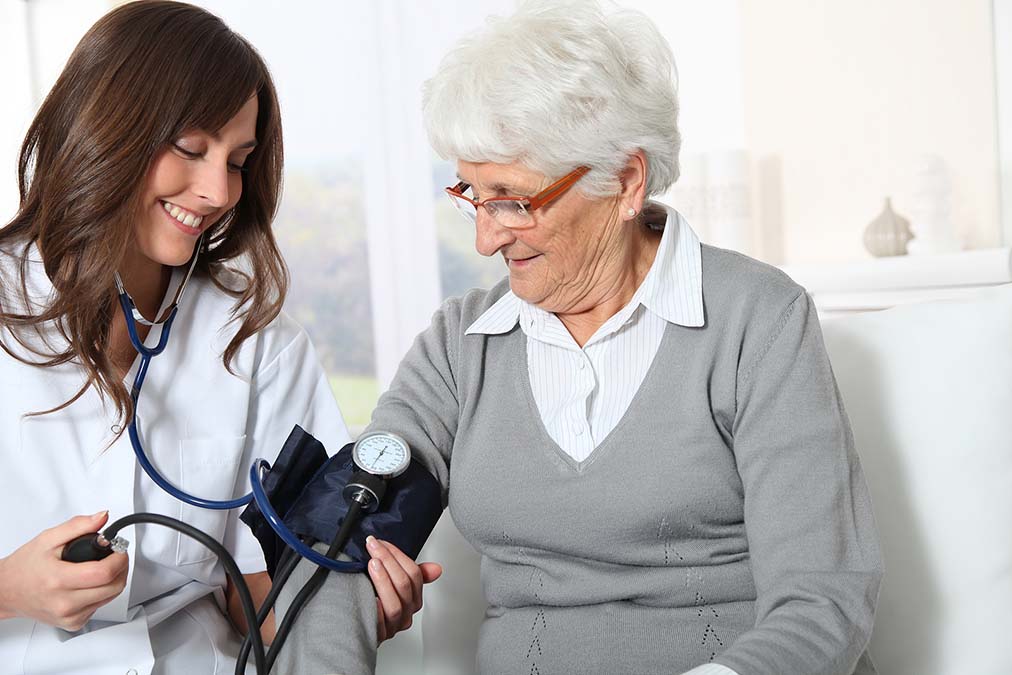 When it comes to your blood pressure readings, the numbers you should strive for can be quite confusing.
When it comes to your blood pressure readings, the numbers you should strive for can be quite confusing.
What was acceptable yesterday may not be good today.
Is your doctor trying to push you too low (overmedicating) or giving your blood pressure too much slack, thereby increasing your risk of dying from a stroke or heart attack?
Years ago, doctors relied on a crude formula for systolic blood pressure (100 plus a patient’s age) to determine whether blood pressure was within acceptable limits or needed to be lowered.
This method resulted in dangerously high “acceptable” blood pressure levels for many middle-aged and elderly people. Gradually, the standard became a universal cut-off level of blood pressure between 140/90 mmHg to 150/100 mmHg. For blood pressure readings higher than this, a doctor would recommend a lifestyle change or medical intervention.
Eventually, the target was reduced to 140/90 mmHg for healthy adults or 120/80 mmHg for adults with diabetes or kidney-related diseases.
Lower is Better
Recent evidence from a National Institutes of Health study has convinced medical researchers to once again lower their recommendations regarding safe blood pressure levels.
This long-term study, which began in 2009, is known as the Systolic Blood Pressure Intervention Trial (SPRINT); it has confirmed what many doctors have learned through years of clinical practice. According to John Kostis, director of the Cardiovascular Institute at Rutgers’ Robert Wood Johnson Medical School, “the lower the better and the earlier the better.” This means that the best way to prevent strokes, heart attacks, and other cardiovascular events is to take aggressive and swift action as soon as high blood pressure is detected, regardless of the patient’s age.
Focusing on systolic blood pressure—the upper number of the blood pressure ratio, representing pressure in the arteries during heart contraction—the SPRINT researchers sought to find out whether reducing this value to a maximum of 120 mmHg would offer any benefit to adult patients. These patients are generally age 50 or older, with hypertension and a risk of developing heart or kidney disease.
The results were overwhelmingly in favor of lower blood pressure levels. By comparison, a systolic reading of 120 decreased heart attack, heart failure, and stroke rates by nearly a third, and reduced the risk of blood pressure-related death by close to 25%, when compared to a 140-mmHg systolic pressure reading—long considered the standard.
So how did SPRINT researchers accomplish their goal? The standard dose of any of the five classes of blood pressure drugs produces about a 10-mmHg drop in systolic blood pressure. Statistically, doubling the dosage of a single drug would provide less than a 50% additional return. When there is a large gap between the actual and ideal systolic pressure, it becomes necessary to mix and match drugs and dosages. As a result, to bring their systolic pressures down to 120 mmHg, some SPRINT participants required up to four different medications.
The Inevitable Controversy
However, not all experts agree on the cardiovascular benefits of using multiple blood pressure drugs. According to biostatistician Dr. George Howard from the Birmingham School of Public Health at the University of Alabama, the risk of stroke may even rise from taking multiple blood pressure medications. This risk can increase as much as 33% with each additional drug.
This evidence contradicts the SPRINT results. Additionally, with more drug prescriptions comes the increased risk for side effects and adverse drug interactions. So while SPRINT gives doctors a protocol and rationale that they can use to potentially improve the health and lives of their patients, this approach is not without risks.
The Take-Home
Since hypertension is largely a preventable lifestyle-related disease, it usually responds well to dietary and lifestyle changes. Experts continue to emphasize the need to stop smoking, get regular exercise, maintain a healthy body weight, and consume alcohol in moderation.
These changes offer a win-win scenario, ensuring fewer medical complications while improving overall health.
So what is the best natural approach to lower your blood pressure without medications?

 Overcoming IBD
Overcoming IBD Multiple Sclerosis
Multiple Sclerosis Banishing Bronchitis
Banishing Bronchitis Gum Disease Gone
Gum Disease Gone Overcoming Onychomycosis
Overcoming Onychomycosis Neuropathy No More
Neuropathy No More The Prostate Protocol
The Prostate Protocol Brain Booster
Brain Booster
 Ironbound
Ironbound
 Solution for Shingles
Solution for Shingles
 The Bone Density Solution
The Bone Density Solution
 The Ultimate Healing Protocol
The Ultimate Healing Protocol
 The Parkinson's Protocol
The Parkinson's Protocol
 The Chronic Kidney Disease Solution
The Chronic Kidney Disease Solution
 Overthrowing Anxiety
Overthrowing Anxiety The Fatty Liver Solution
The Fatty Liver Solution The Hypothyroidism Solution
The Hypothyroidism Solution
 The End of Gout
The End of Gout The Blood Pressure Program
The Blood Pressure Program
 The Oxigized Cholesterol Strategy
The Oxigized Cholesterol Strategy
 Stop Snoring And Sleep Apnea Program
Stop Snoring And Sleep Apnea Program
 The Arthritis Strategy
The Arthritis Strategy The Vertigo & Dizziness Program
The Vertigo & Dizziness Program The 3-Step Diabetes Strategy
The 3-Step Diabetes Strategy Hemorrhoids Healing Protocol
Hemorrhoids Healing Protocol The Erectile Dysfunction Master
The Erectile Dysfunction Master Weight Loss Breeze
Weight Loss Breeze The IBS Program
The IBS Program The Insomnia Program
The Insomnia Program The Migraine and Headache Program
The Migraine and Headache Program The Neck Pain Solution
The Neck Pain Solution The Menopause Solution
The Menopause Solution The Ejaculation Master
The Ejaculation Master The TMJ Solution
The TMJ Solution The Acid Reflux Solution
The Acid Reflux Solution The Fibromyalgia Solution
The Fibromyalgia Solution The Psoriasis Strategy
The Psoriasis Strategy